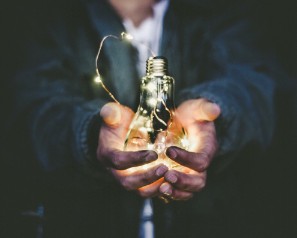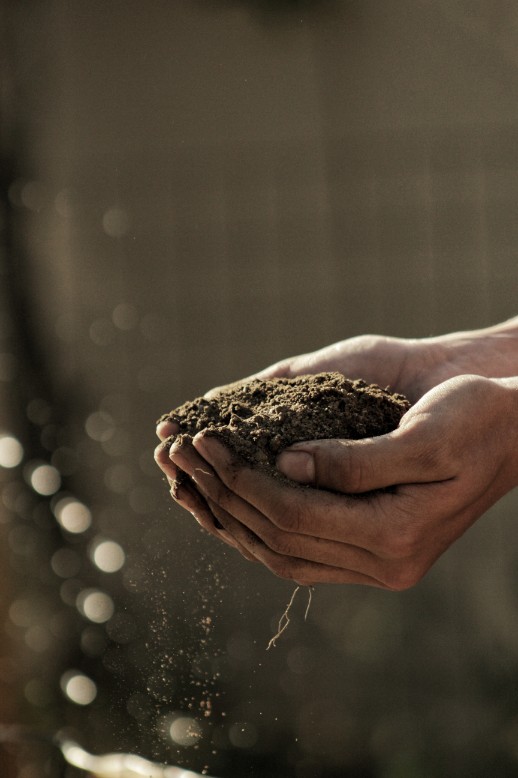If you are a responsible consumer, you consume without damaging the environment, people and local economies. This can be done by, for instance, buying products that are qualified as sustainable by an institute. For people who are still struggling with how to live a more sustainable life, I will give you a couple of day-to-day tips.
Buying certified sustainable products
There are different ways to recognize a sustainable product. Usually, sustainable products can be divided into a quality mark, company logo, an umbrella name and protected names.
Quality mark
A product that gets rewarded with a quality mark is usually a product that includes all benefits of sustainability. The product and company keep in mind the environment, the people where the product is produced and an organic profit. This quality mark is always rewarded by a third, independent party. A couple of examples of quality marks are: Rainforest Alliance Certified, CSA Sustainability Mark, Fair trade and Forest Stewardship Council.
Company collection logo
Companies can come up with their own standards of sustainable processing. They can draw up certain requirements that their product or packaging must meet. They can also make specific demands on their suppliers. For example, it only runs with electric cars. Many companies work together on this type of logo. For instance, Cocao life is an initiative from the brands Milka, Cote d’Or and Toblerone to improve quality of life for cocoa farmers.
Umbrella logo
An umbrella logo is a logo that is always to be found in packaging with other marks. It doesn’t define much but often shows what process the product has been through. A good example of that is Fair Trade Original. A Fair Trade original product can be produced within Fair Trade territory, but for without it being controlled by Fair Trade. When a new product is launched on the Fair Trade territory, it is a Fair Trade Original Product and often be found with another mark such as ‘biological’ or organic’. After inspection, it will only obtain a Fair Trade logo.
Protected names
Protected names in terms of sustainability are based on national laws. This varies from country to country according to which requirements it has to do. Examples of this are the use of the names ‘free-range eggs’ and biological eggs. In some countries, free-range chickens are kept at a 5-meter space with 5 chickens, while in other countries they can be 10 chickens. In general, it is true that in most countries organic chickens always walk outside freely. These types of protected names should therefore not be used if they do not pursue the law.
Separating waste
Separating waste includes a lot of facts and fables. One way or another, materials like paper, glass, batteries and many forms of plastic can be reused to a large extent. This not only saves money, but also means you do not have to exhaust fossil fuels like energy and gas.
Why recycling and not burning
Recycling has 4 major advantages compared to burning:
- It reduces the reproduction of single-use products. For example, paper is a single-use product that requires trees to be cut. Other examples are petroleum for plastic and rare metals for cans.
- The less raw materials we use, the more space it creates for agriculture and cultivating food
- Recycled products are cheaper because less energy is produced during the process compared to creating new materials or burning. One good example of that is, for instance, that it takes twenty times more energy to create new aluminum than to remelt the old aluminum. This is not only bad for the environment but also more expensive for companies.
- Due to the fact that recycling costs less energy, it also releases fewer Greenhouse gasses.
Different types of plastic
When you start to recycle and divide your food waste, plastic waste and glass waste, be aware of the different types of plastics. They are five types of plastic and not all of them can be recycled. The type of plastic that can be recycled differs per country and often per municipality.
Saving energy at home
Saving energy at home is actually quite simple, you just need to know how. With little adjustments such as good isolation or solar panels, you not only save money upon your energy bill but also help the environment and reduce greenhouse gasses.
Isolate your house
A good, isolated house means that the heat that is produced inside the house, stays in the house and minimizes the chance of it being released outside the house. This ensures that less heating is needed or when it’s needed, it can be adjusted to a lower temperature. A lower temperature produces less energy. On the other hand, a good isolated house also ensures that when it’s summer, the house will be cooled well enough. This ensures that someone may not have to turn on the fan or air conditioning. This reduces energy consumption once again.
Solar panels
The name ‘Solar Panels’ comes from the Spanish word ‘Sol’, which means sun. Nevertheless, solar panels don’t require sun to work. Even on a cloudy day, they deliver electricity. Solar panels convert light into heat that is used for electricity. Solar panels from the highest quality convert 14 to 18 percent of the sunlight that shines in a day into electricity. A great benefit of solar panels is that it’s not only sustainable and therefore good for the environment, as well you save on the energy bill. By placing solar panels, you become your own energy supplier. Another great asset is that in 2 to 3 years, solar panels save more CO2 emissions than it took to construct it. A final benefit of solar panels is that they usually work full power for 20 to 30 years. Therefore, you help to protect the environment for 20 to 30 years!
Led lights
In the average household, lamps use about 12% of the total energy usage. However, it is relatively easy to save upon that by switching the type of lamp you use. Led lamps use 85% less energy than the standard light bulbs and another 75% less than halogen lamps. Therefore, again, this is not only a good measurement for more sustainable living, but as well to save money.
Making less impact online
Did you know there’s a couple of handy Chrome Extensions that support in being more sustainable. TreeClicks is a free Chrome Extension that plants trees when you shop at one of the 50.000 connected shops. The shopping price will remain the same.
Do you want more tips? Read more about How to be sustainable? Or this article for tips for Living Sustainable.








 Move around with public transportation
Move around with public transportation







